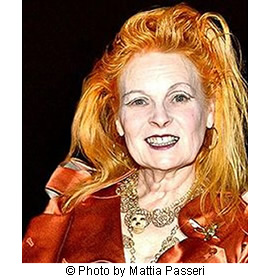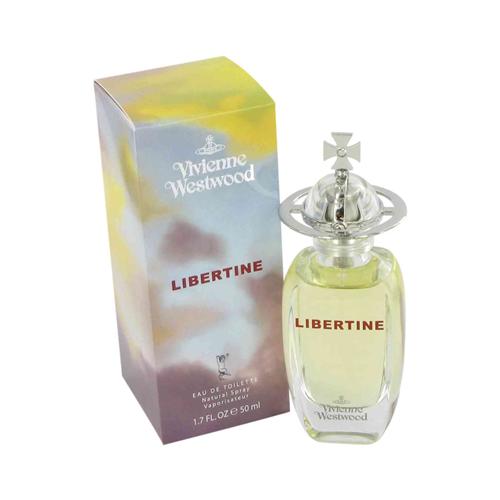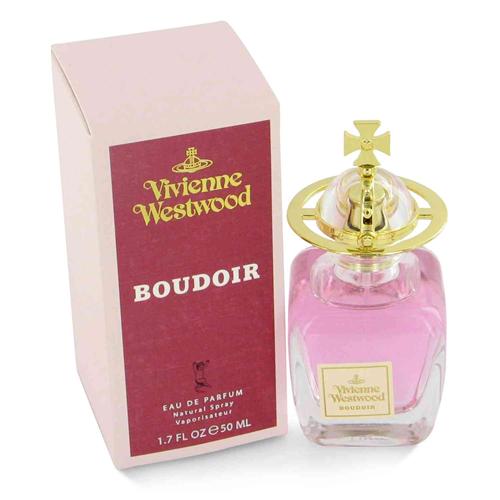Designers / Vivienne Westwood

Vivienne Westwood
Founded in 1970
Designer name: Vivienne Westwood
Great Britain:


Vivienne Westwood's Logo

Vivienne Westwood short perfume brand description
Perfumetr represents a list of all Vivienne Westwood perfume and price comparison.
Vivienne Westwood's perfume price comparison list:
Vivienne Westwood Women's perfume (5)
Vivienne Westwood Men's perfume (0)
Vivienne Westwood does not have perfume for men.





British designer Vivienne Westwood (born 1941) is often credited with being the creator of "punk fashions, " among other trend-setting styles.
Vivienne Westwood was born in Tinwhistle, England, in 1941. Following just one term at the Harrow Art School, Westwood left and trained to become a primary school teacher. She earned her living teaching until she crossed paths with Malcolm McLaren, the man behind the punk rock group The Sex Pistols.
Under McLaren's guidance and influence, Westwood slid into the world of youthful fashion, which reflected the turmoil of those rebellious times. She was responsible for mirroring and outfitting the social movements characterized by the growing segments of British population known as the Teddy Boys, Rockers, and, finally, the Punks.
In 1971 the duo began making drastic changes in British style with a series of shops located at 430 Kings Road. The first was Let It Rock, a 1950s revival boutique, coinciding with the Teddy Boys movement and zoot suits. The store also sold 1950s memorabilia and rock music. Then in 1972 the shop was changed to Too Fast To Live, Too Young To Die, a name stolen from a biker's jacket. In 1974 Westwood and McLaren opened their infamous Sex Shop, selling bondage and fetish fashions of rubber and leather. Rock star Adam Ant has commented that, "Sex was one of the all-time greatest shops in history."
The concept of satirical style and subversive chic was foremost in Westwood and McLaren's minds. Both were once prosecuted for wearing T-shirts that depicted a homosexual cowboy.
In 1975 they opened Seditionaries, the first authentic punk clothing shop in London. Jon Savage, a Face magazine writer, then called their look "the only modern look of the '70s." The shop translated the hard edges of street style in an interior filled with photos of a bombed-out, war-torn London. When her Pirate collection coincided with the New Romantic fashion movement in London, the shop changed focus again, becoming Worlds End, with a bizarre fantasy interior of slate tiles, cuckoo clocks, and sloping floors. Her next collection was dubbed Clothes for Heros, and her patrons included the soon-to-be-famous Boy George.
Westwood's next three collections, Savage (1981) and Hobo and Buffalo (both in 1982), were highly innovative, and her wildly staged shows (models square dancing to Appalachian music covered with mud makeup) affected the show styles of other designers.
Soon after, another shop opened in London's fashionable West End with a 3-D map of Africa. It was called Nostalgia of Mud, the name a slam of middle-class longings for low-life seedy chic. Westwood's clothing at this time consisted of rags tangled in hair, bras worn outside disheveled clothing, and ripped and torn T-shirts.
In 1983 Westwood's alliance with McLaren came to an explosive and painful end. Without his tutelage and often overbearing guidance, Westwood began to extend her design range. The Witches Collection (summer of 1983), the first completely on her own, was a highly successful showing of oddly shaped, cut, and proportioned garments (the neckline often found under the arm) based on a book about voodoo she had read. Her clothing was cut, not on a board, but on the body, pulling, draping, and then, finally, cutting.
After several seasons' absence, Westwood came back strong with her fall 1985 collection centered on the bubble-shaped hooped skirt with thigh-high stockings. Westwood's Mini-Crinis caused a shift in silhouette that was swiftly picked up, first by Jean Paul Gaultier, then by almost every other designer in Europe and New York. In fact, 1986 was dubbed by fashion seers as The Year That Went Pouf, and all because of Vivienne Westwood. Through the 1990s Westwood continued to reign as Queen of Punk Fashion. She scandalized and outraged the world of fashion with bare-breasted models and bizarre creations at yearly shows in Paris and other centers of design. A childhood friend, Fred Vermorel, wrote a biography of Westwood in 1996.
Westwood and McLaren can be justified in claiming that they invented "punk fashions, " and, despite her rebellious nature, the fashion establishment recognized her work as important. Her Pirate outfit was the centerpiece of the modern dress collection in London's Victoria & Albert Museum. Decadent, depraved, and demented are all words that describe the fashions of Vivienne Westwood. She once said of her designs, "My aim is to make the poor look rich and the rich look poor."